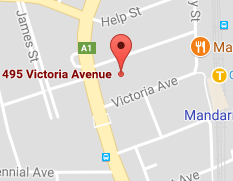The listed aged care providers Estia, Regis and Japara have recently released their results for the six months to 31 December 2017. StewartBrown has reviewed the Listed Providers Financial Reports and Investor Presentations and a summary of this analysis can be found in the Listed Providers Analysis Report (December 2017).
This report focuses solely on the three listed providers in order to provide a timely snapshot and commentary on their results. The results and analysis for those providers in the StewartBrown Aged Care Financial Performance Survey will be made available within the next few weeks.
The key highlights from the report are summarised below. The comparison period is June 2017.
Occupancy
Estia experienced a slight increase in average occupancy however Japara’s average occupancy decreased from 94.6% to 92.3% due to “abnormally severe influenza outbreaks” whilst Regis average occupancy fell from 94.9% to 93.1% due to “more virulent influenza and gastroenteritis than usual”.
Number of operational places
Across the three listed companies, the number of operational places increased slightly in FY17 and to December 2017, mostly due to operational places being released as new facilities were opened or existing ones upgraded.
ACFI
The average ACFI per bed day increased for Estia and Japara whilst staying the same for Regis.
Staff costs
Staff costs are the most significant of all expenses aged care operators face. All three listed providers experienced an increase in staff costs as a percentage of operating revenue.
EBITDA
EBITDA is defined as earnings before interest, tax, depreciation and amortisation. The EBITDA per bed per annum has decreased for both Regis and Japara due to impacted by lower occupancy from influenza outbreaks, the effect of the cuts to residential aged care funding, and staff costs increasing at a greater rate than revenue. The EBITDA per bed per annum has increased for Estia due to growing occupancy rate and higher government revenue.
EBT
Whilst, the sector primarily uses EBITDA as a measure of financial performance, this measure doesn’t consider depreciation and as this is a significant expense for residential aged care facilities, we consider that EBT (earnings before tax) should also be given equal consideration when assessing overall financial performance.
The EBT per bed per annum varies considerably between the three listed entities, with a decrease occurring for each of them.
Click here to access the Listed Providers Analysis Report for December 2017.
For more information on the Aged Care Financial Benchmark click here.



